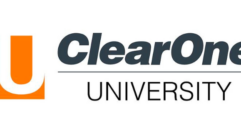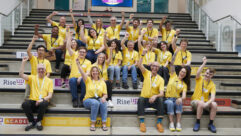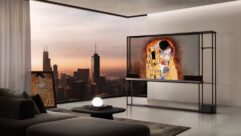

Summer School
Jul 14, 2010 12:00 PM,
By George Petersen
The Rane MLM 65 mic/line mixer is an excellent example of technology made simple.
According to Alice Cooper’s classic 1972 anthem, “School’s out for summer.” While this might be true for millions of schoolkids, it’s prime time for integrators who have lined up jobs to upgrade, replace, and repair systems in educational facilities.
Modern computers and audiovisual systems can do much to enrich the learning process, and today’s gear is light years ahead of clunky earlier-generation systems. However, as the contractor specing new products into the school environment, please be aware of user limitations. In most situations, the operator for the equipment may be an elementary school teacher, school custodian, or janitor—hardly the well-trained technician or IT professional. And here more than anywhere the basic KISS (keep it simple, stupid) design principle applies.
Related Links

In pro audio, few major companies are family-owned. Among these, examples such as Meyer Sound, Peavey, and Sennheiser come to mind…

In an industry dominated by 8in. ceiling loudspeakers and in an economic climate ruled by cheaper=faster=better, the words “audiophile” and “club installation” are rarely used in the same sentence…

Anyone who works with sound-reinforcement systems spends a lot of time dealing with a lot of unsolved mysteries. The most common of these is the issue of how loud is loud enough. Unfortunately, there’s no easy answer to this question…
Out in the real world
As an example, my sister—a former K-6 instructor—has been doing a lot of music/singing workshops and performances at large events for Girl Scouts. Although she’s not very technical, she frequently needs to provide her own sound system for audiences of up to 1,000. The first time she asked me to put together a system for her, I grabbed two Mackie SRM450 powered loudspeakers, two XLR cables, and two dynamic mics with stands. Like many molded loudspeakers, these have onboard mic preamps, so there was no need for a mixer. I also included two 20ft. IEC power cables. (The 6ft. ones that come with most powered loudspeakers are just silly and sometimes don’t even reach the ground when on pole-mount stands.) So here was a simple system providing ample stereo sound (right mic into right loudspeaker, left mic into left), and the response received at many of the shows was that the sound there had never been better.
I’m hardly suggesting that this is the perfect solution to every system, but before installing a 24-channel digital mixer, condenser mics, and Wi-Fi tablet control into a school cafetorium, please consider the limitations of the user before diving in. I have no problems with using advanced technologies, but if you have to explain setting gain trims, phantom powering, room equalization, and signal processing that’s three layers down on the GUI of a digital console to the school janitor who’s responsible for operating the system, then there’s something wrong with the installer, not the user.
With that thought in mind, I was heartened by some of the new products I saw at last month’s InfoComm show. Rane totally grasps this market with its MLM 65 mic/line mixer, a 3RU box with six balanced mic/line inputs and a stereo input with a rotary switch for selecting one of six sources such as iPod, CD, DVD, RIAA phono, boom box, or USB digital. All that complicated mic/line switching, phantom-power controls, and gain pots are recessed and hidden on the back panel, along with rear-mount overload LEDs so the installer can optimize input gains without having to needing a mirror to see the front controls. Operation is old-school, but features such as a convenient 5VDC charging port for USB devices, USB audio (16-bit/48kHz) I/O jacks, and S/PDIF (coax and optical) outputs make interfacing a breeze to any recording device, laptop, or camcorder. And it offers a template for printing custom labels for the inputs. Another nice touch (and thankfully, a growing trend) is the inclusion of 1/4in. and 1/8in. headphone output jacks. The TRS 1/4in. is still the pro headphone standard, but the majority of consumer cans have 1/8in. terminations and it’s time more companies in the industry figured this out.
To be sure, technology’s great and a wonderful thing to behold, but it’s even better when your customers can actually operate the products you installed. Count on it.










